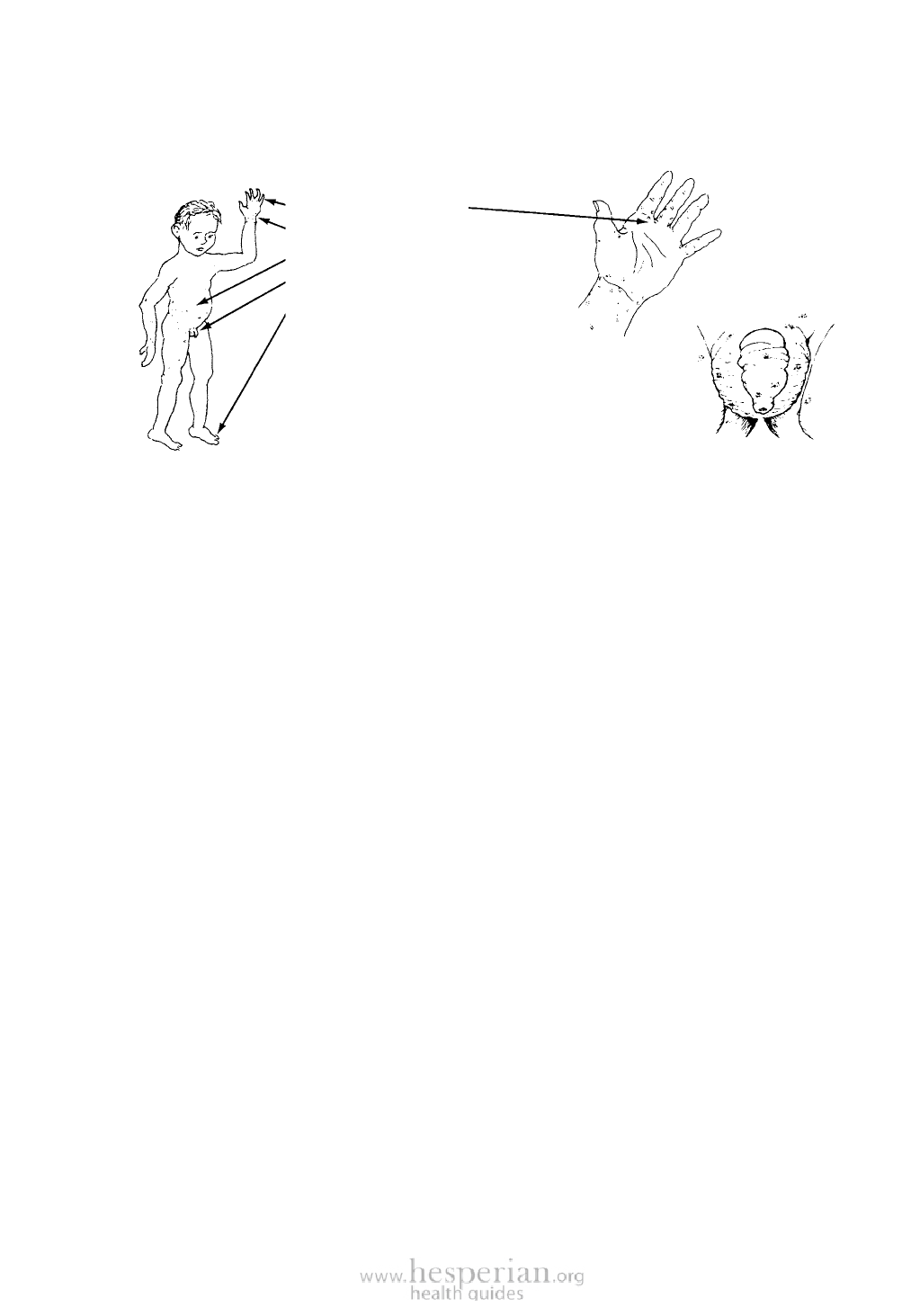
Where There Is No Doctor 2011 199
SCABIES (SEVEN YEAR ITCH)
Scabies is especially common in children. It causes very itchy little bumps that
can appear all over the body, but are most common:
between the fingers
on the wrists
around the waist
on the genitals
between the toes
usually does not appear on head
and face—except in babies
Small itchy sores on the penis
and scrotum of young boys
are almost always scabies.
Scabies is caused by little animals—similar to tiny ticks or chiggers—which make
tunnels under the skin. It is spread by touching the affected skin or by clothes and
bedding. Scratching can cause infection, producing sores with pus, and sometimes
swollen lymph nodes or fever. The first time a person gets scabies, it can take 2 to
6 weeks for signs to appear. If the person has had scabies before, signs will appear
in 1 to 4 days.
Treatment:
♦ If one person has scabies, everyone in his family should be treated. So should
all sexual contacts.
♦ Personal cleanliness is of first importance. Bathe and change clothes daily.
♦ Cut fingernails very short to reduce spreading and infection.
♦ Wash all clothes and bedding or, better still, boil them. Hang them in the sun
to dry.
♦ Remove all animals from the house.
♦ Use a cream containing permethrin (Elimite, see page 372), which is made
from chrysanthemum flowers. First wash the whole body vigorously with soap
and hot water. Then rub the cream into the whole body except the face, unless
it is affected. Leave it on for 10 to 14 hours, and then bathe again. Be sure to
put on clean clothes and use clean bedding after treatment. Repeat treatment
1 week later.
♦ Do not use creams or ointments that include lindane. Lindane is a poison!
♦ If you cannot get permethrin, try crotamiton (Eurax, Crotan) but avoid using it
on children under 3 years old.
♦ Or you can try using sulfur powder mixed with lard, Vaseline or body oil – use
1 part sulfur to 10 parts lard or oil. Do not use on children under 1 year old. Apply
to whole body (except face) 3 times a day for 3 days. Stop using immediately if
rash worsens or other signs of allergic reaction develop (see p. 166).
♦ If none of these treatments work, you can try giving a dose of ivermectin (see
p. 377), and then repeat the dose after 10 to 14 days. This is the best method
for a person with HIV.
The itching and rash may last for up to two weeks after treatment. If they last
longer, it is possible that the person has been re-infected or that the treatment did not
work. If after 2 weeks the signs have not gone away, repeat the treatment again or try
a different treatment. Remember to repeat the prevention actions as well.